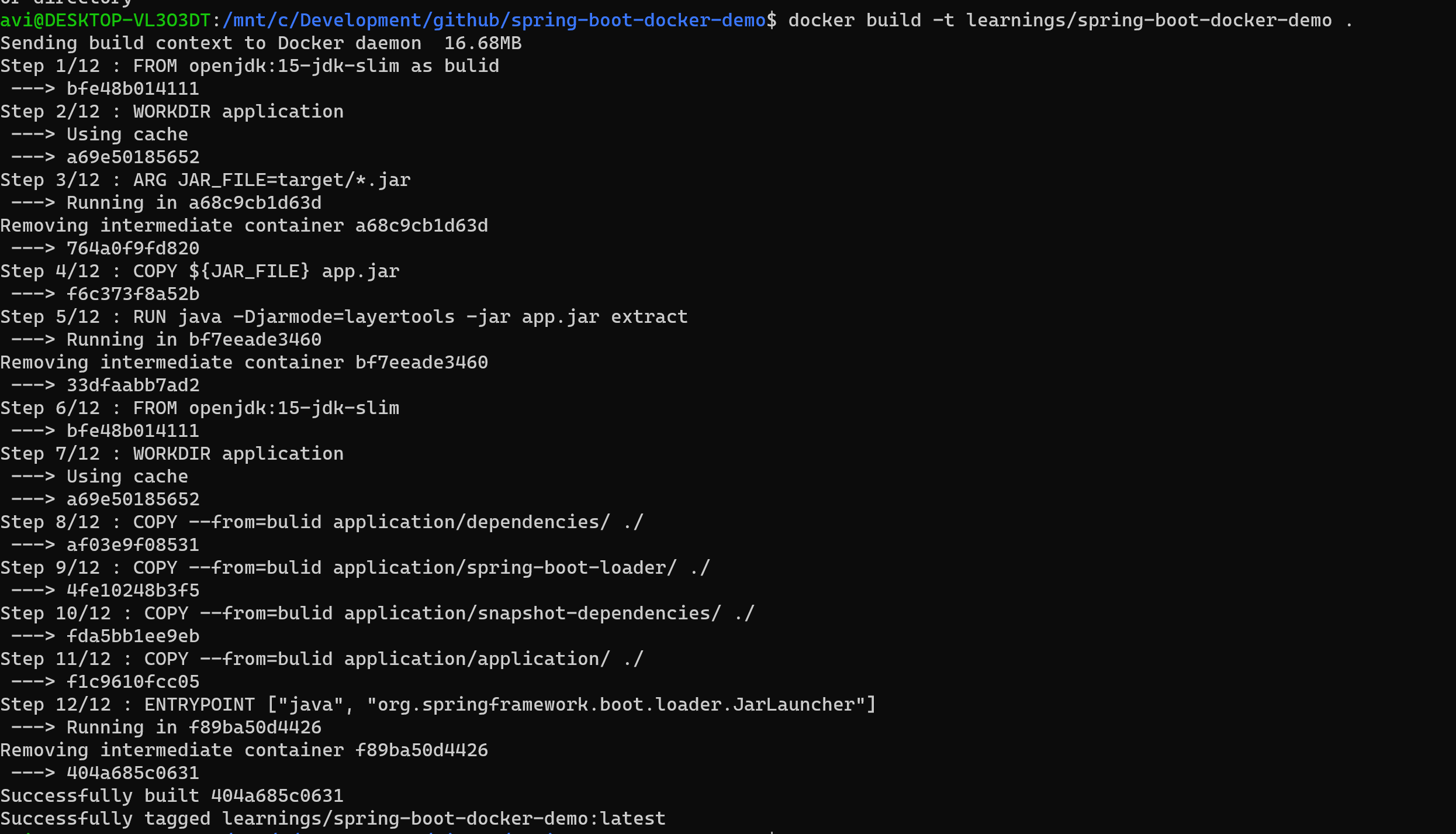
Once you finish going through this article, you will be able to answer :ġ) How does Docker help us in project deployment?Ģ) What is the drawback of the traditional deployment process?ģ) How does Docker provide us containerization to ease the deployment process?Ĥ) What are the definitions of various terms involved in Docker technology like a docker including docker container, docker image, docker host, docker hub etc. 12 Summary What Can You Expect from this Article?.11 What is the benefit of using Docker in Microservices?.10.8 Step#7 : Execute Docker Commands to Pull & Push Images.
Docker run image spring boot install#
10.6 Step#5 : Download and Install Docker Toolbox/Desktop.10.4 Step#3 : Creating jar file of the application.10.3 Step#2 : Creating Spring Boot Application using STS.

Docker run image spring boot how to#
10 How to deploy Spring Boot Application in Docker Hub?.9 What are the major steps in getting started with Docker Hub?.8 What are the important features of Docker Hub?.1 What Can You Expect from this Article?.Table of Contents (Click on links below to navigate) Let’s start learning ‘How to deploy Spring Boot Application in Docker?’ Including all fundamentals around it. These containers are compact and transferable units in which you can start up an application quickly and easily. A container is a virtual run-time environment where users can isolate applications from the primary system. In brief Docker is a new technology that facilitates development teams to build, manage, and secure applications anywhere. In fact, they have carried a revolution in the software development and delivery. Docker and containers are a new way of running software in production.

If you are a Java developer working in IT industry for the last few years, then you must have heard about Docker. Therefore, we are going to learn ‘How to deploy Spring Boot Application to Docker?’. Further to avoid issues generated during production deployment, we should once think of Docker concept. Generally in traditional deployment, we copy the code from development server to the production server and carry out some other configurations.

Have you ever observed that an application runs successfully in development environment, but the same application with the same code creates multiple issues while running in the production environment? If not, you may observe this in near future when you follow traditional deployment procedure.


 0 kommentar(er)
0 kommentar(er)
